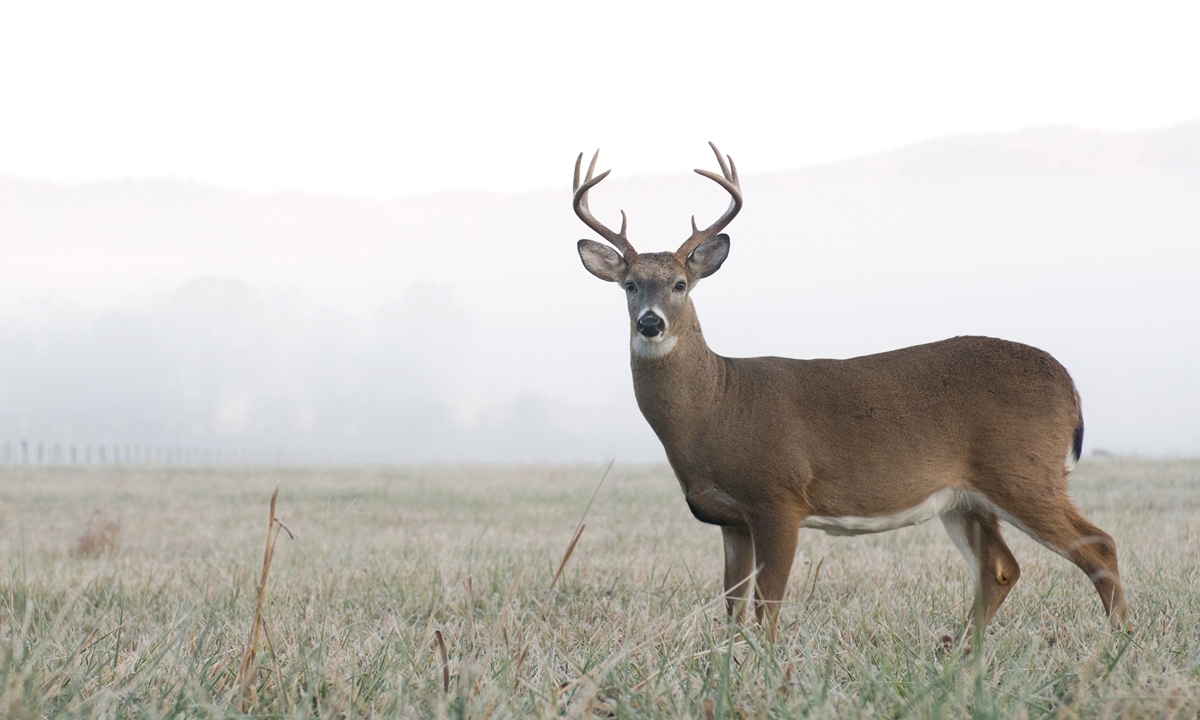
Deer. Photo: VCG
Forty percent of the white-tailed deer in four US states in 2021 have been found with SARS-CoV-2 antibodies, which indicates that they have been exposed to SARS-CoV-2, according to a new study. Experts warned that large number of deer population infected with the virus may make deer population a host to the virus which can then pass the virus to humans, triggering a new wave of the pandemic.
The new study, conducted by researchers from the US Department of Agriculture (USDA)'s Animal and Plant Health Inspection Service (APHIS), analyzed 624 serum samples from white-tailed deer in Illinois, Michigan, New York and Pennsylvania, and found that antibodies against SARS-CoV-2 were tested in 152 samples from 2021, about 40 percent. The study said that the data suggested white-tailed deer in the populations assessed have been exposed to SARS-CoV-2.
The study, published on the preprint server on bioRxiv on July 29, also found that antibodies were also detected in three samples from 2020 and one sample from 2019. No detections were observed in samples from 2011-2018.
The US confirmed its first COVID-19 case on January 21 2020. However, the results did not indicate that deer were exposed to SARS-CoV-2 in the US before January 2020, the US National Wildlife Research Center, which is the research unit of the USDA-APHIS Wildlife Services program, told the Global Times on Wednesday.
"Of the 143 samples collected prior to January 2020, only one contained antibodies to SARS-CoV-2. The single sample was at the minimum threshold of detection and was likely a false positive. This low-level detection is well within the expected false positive rate of the test used," the center said in an email.
"We do not know how the deer was exposed to SARS-CoV-2. It is possible they were exposed through people, the environment, other deer, or another animal species," the center said.
The study listed several potential transmission routes for movement of virus into deer population, which included infected human to deer or through the environment.
White-tailed deer are susceptible to SARS-CoV-2 and are abundant in the US, approximately 30 million, and often come into close contact with people. The study aimed at identifying species that may serve as reservoirs or hosts for the virus, understanding the origin of the virus and predicting its impacts on wildlife and the risks of cross-species transmission, according to the APHIS.
Jin Dongyan, a biomedical professor at the University of Hong Kong, told the Global Times that certain mammal such as cats, dogs, mink and deer were susceptible to SARS-CoV-2, with infections reported in Europe and Asia.
But in most cases, they were infected with the virus from infected people, and we should be concerned whether American white-tailed deer will become another possible reservoir or host for the virus which will then pass it to human beings, Jin said.
In the summer of 2020, several countries in Europe including Denmark and the Netherlands were reporting cases of mink being infected with the SARS-CoV-2, and Dutch government reported that at least two people had caught COVID-19 from mink in the Netherlands.
Jin said that it's possible for deer to become intermediate hosts in the future, which may lead to a new wave of the pandemic after they infected people.
The center said in the email that they will next focus on studying how exactly were deer exposed to the virus, whether deer could transmit the virus to other species of wildlife or domestic animals and whether any variants will emerge if the virus is widely circulating in the deer population.


